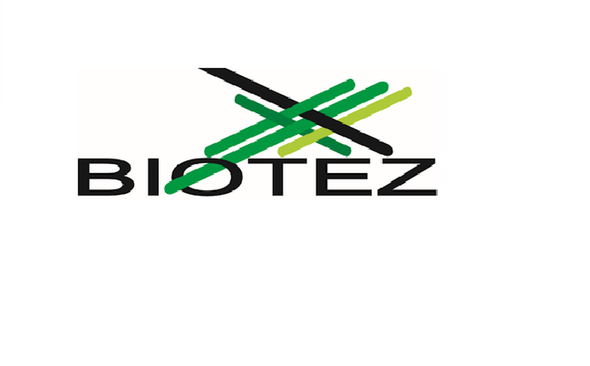Description
The IMMUNO-TEK ELISA Construction System is supplied for research purposes or for further manufacturing use only.
The IMMUNO-TEK ELISA Construction System is an easy to use kit that enables scientists to rapidly prepare high quality ELISA assays. ELISA assays prepared with the IMMUNO-TEK ELISA Construction System are of comparable quality to those manufactured by the world’s leading immunodiagnostic companies. The kit contains specially screened microwell plates and all reagents necessary to coat the plates with antigen or antibody. Microwell plates prepared with the IMMUNO-TEK ELISA Construction System have a low background, high sensitivity and may be stored desiccated for one to two years with no loss of activity.
For convenience, all components of the IMMUNO-TEK ELISA Construction System may be ordered individually from ZeptoMetrix. This is to meet the needs of scientists who wish to further optimize their ELISA assays through the use of special microwell plates or coating conditions.
Zeptometrix | 0801188 | ELISA Construction System DataSheet
PRINCIPLE OF THE TEST
Preparation of ELISA microwell plates involves three major steps: 1) binding antigen or antibody to the plate; 2) blocking non-specific binding sites on the plate; and 3) coating the plate with a stabilizer to allow dry storage of the plates for long periods of time. The IMMUNO-TEK ELISA Construction System contains ZeptoBind used in the binding step, ZeptoBlock used to block non-specific sites on the plate and ZeptoCoat which stabilizes the antigen or antibody applied to the plate. The IMMUNO-TEK ELISA Construction System also provides microwell plates from lots of plates that have been specially selected for high binding and low background characteristics.
REAGENTS
Materials Supplied:
- ZeptoBind, (60 ml Bottle)
- ZeptoBlock, (120 ml Bottle)
- ZeptoCoat, (60 ml Bottle)
- Microwell Plates, (5 per system)
- Sealable Bags, (5 per system)
- Desiccant Pillows, (5 per system)
- Plate Sealers, (5 per system): 10 sealers per pack
- Sealable Plastic Bag (1 bag): For storage of unused microplate strips
® Triton X-100 is a registered trademark of Union Carbide Chemicals and Plastics Co., Inc.
Tween 20 is a registered trademark of Imperial Chemical Industries.
Materials required but not supplied:
- Disposable gloves
- Validated adjustable micropipettes, single and multichannel
- Test tubes and racks for preparing specimen and control dilutions
- Graduated cylinders and assorted beakers
- Validated automatic microplate washer or manual vacuum aspiration equipment
- Validated incubator for 37°C ±1°C
- Validated microplate reader
- Timer
- 1% sodium hypochlorite as disinfectant. May be prepared from household bleach
- Distilled or deionized water
Allow all reagents to reach room temperature before use.
Step 1: Dissolve antigen or antibody in ZeptoBind. Prepare enough to add 100 ul to each microwell to be coated.
Step 2: Pipette 100 ul of antigen or antibody into each microwell.
Step 3: Cover plate with a plate sealer and incubate plate overnight at 4º C.
Step 4: Aspirate antigen or antibody.
Step 5: Pipet 200 µl of ZeptoBlock into each microwell.
Step 6: Cover microwell plate with a plate sealer and incubate for 2 hours at room temperature.
Step 7: Aspirate ZeptoBlock.
Step 8: Pipet 100 µl of ZeptoCoat into each microwell.
Step 9: Cover with a plate sealer and incubate 1 hour at room temperature.
Step 10: Aspirate ZeptoCoat and allow microwell plate to dry for 4 hours at room temperature.
Step 11: Place microwell plate and one desiccant pillow into a resealable bag and store until use. Microwell plates prepared by this method will be stable for 12 to 24 months.
VARIABLES IN MICROWELL PLATE PRODUCTION
Below is an example of a standard curve and should not be used to calculate actual samples. Variations may be observed from laboratory to laboratory due to pipetting, incubator temperatures, plate readers, etc.
Although relatively good, general purpose immunoassays can be prepared rapidly by using the reagent manufacturers suggested working concentrations, creation of a high quality immunoassay involves a series of experiments to determine the exact amount of each reagent to be used. Also, in many cases a manufacturer’s working concentration is not available as is the situation where a scientist has prepared his/her own antigen or antibody. A discussion of many of such optimization procedures can be found in Harlow and Lane, Antibodies, A Laboratory Manual, Cold Spring Harbor Laboratory, 1988. This manual also describes a number of different immunoassay formats and architectures. The discussion below is limited to optimizing microwell plate coating conditions using the IMMUNO-TEK Construction System.
Optimization of Antigen or Antibody Coating Concentration:
The concentration of antibody or antigen will affect the quality of the assay being developed. For most antibodies or antigens, the optimal coating concentration will be in the range of 1 to 10 ug/ml when used with ZeptoBind. If the optimal concentration is not known, and it is not practical to perform a titration to determine the amount to use, we recommend using 10 ug/ml. This will work well for most applications.
When possible, we recommend titrating the amount of antigen or antibody to be used in microwell plate coating. We also recommend titrating the amout of antigen or antibody when using new lots of materials as there may be significant lot-to-lot variations in antigen or antibody preparations.
In such titrations, increasing amounts of antigens or antibodies will increase the signal, eventually reaching a plateau. Ideally, for an optimal assay one wishes to be at this plateau. Concentrations of antigen or antibody above that needed to achieve a plateau are not only wasteful but in some assays can lead to unacceptable backgrounds in the assay. For example, antigen concentrations from 1 to 10 ug/ml may yield steadily increasing signal but concentrations above 10 ug/ml show no further signal increase. In this case, 10 ug/ml would represent the plateau and the optimal coating concentration would be 10 ug/ml.






